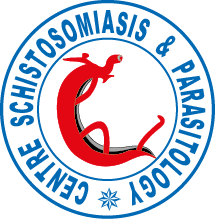A five-country evaluation of a point-of-care circulating cathodic antigen urine assay for the prevalence of Schistosoma mansoni.
Abstract
We evaluated a commercial point-of-care circulating cathodic antigen (POC-CCA) test for assessing Schistosoma mansoni infection prevalence in areas at risk. Overall, 4,405 school-age children in Cameroon, Côte d’Ivoire, Ethiopia, Kenya, and Uganda provided urine for POC-CCA testing and stool for Kato-Katz assays. By latent class analysis, one POC-CCA test was more sensitive (86% versus 62%) but less specific (72% versus ~100%) than multiple Kato-Katz smears from one stool. However, only 1% of POC-CCA tests in a non-endemic area were false positives, suggesting the latent class analysis underestimated the POC-CCA specificity. Multivariable modeling estimated POC-CCA as significantly more sensitive than Kato-Katz at low infection intensities (< 100 eggs/gram stool). By linear regression, 72% prevalence among 9-12 year olds by POC-CCA corresponded to 50% prevalence by Kato-Katz, whereas 46% POC-CCA prevalence corresponded to 10% Kato-Katz prevalence. We conclude that one urine POC-CCA test can replace Kato-Katz testing for community-level S. mansoni prevalence mapping.
